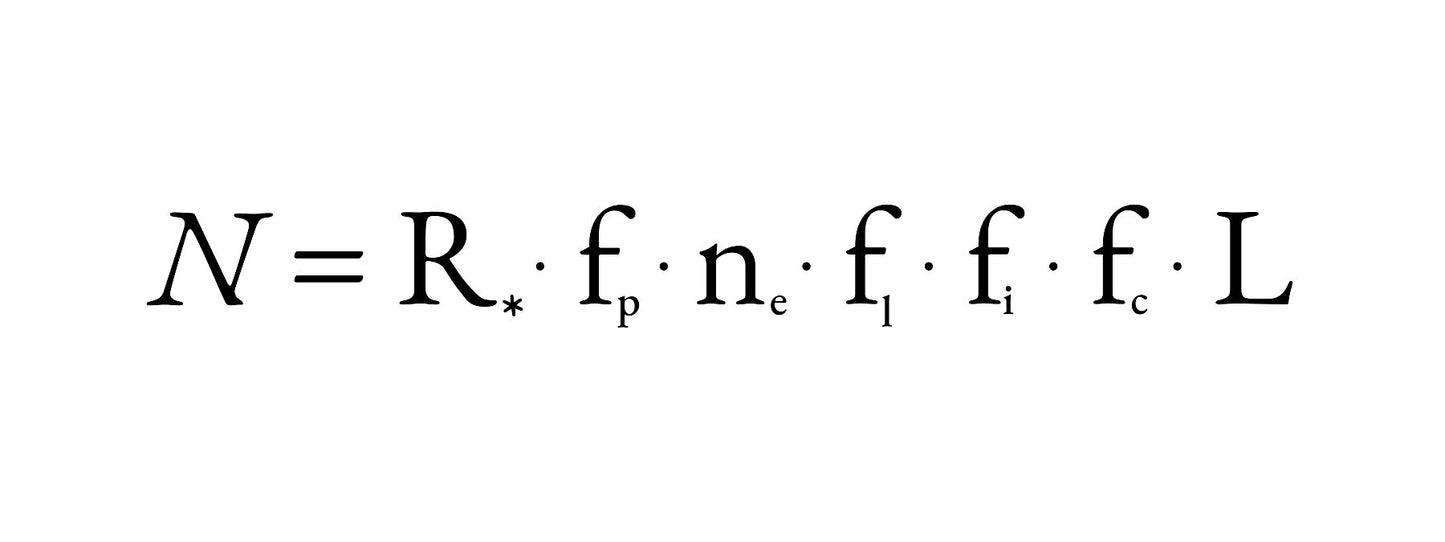Equations4U
The Drake Equation
The Drake Equation
Couldn't load pickup availability
In the early 1960s, Frank Drake, an astrophysicist with a keen eye and a sharper mind, embarked on a journey not unlike a detective unraveling a cosmic mystery. The space age was in its infancy, the Earth buzzing with the excitement of exploration beyond its atmosphere. But Drake's gaze was fixed further afield, on the vast, star-speckled canvas of the universe.
Drake, much like a lone protagonist in a thriller, navigated the corridors of academia and the burgeoning field of space science with a singular question burning in his mind: Are we alone in the universe? This question wasn't just a passing curiosity; it was a relentless pursuit, a need to know that gnawed at him day and night.
Amidst the backdrop of this era, marked by the tension of the Cold War and the euphoria of space exploration, Drake's story takes a pivotal turn at the Green Bank Conference in 1961. This gathering wasn't just any scientific meeting; it was a conclave of some of the brightest minds, a scene where ideas clashed and danced in equal measure.
Here, Drake, with the poise and focus of a master craftsman, unveiled something groundbreaking. It wasn't a spacecraft design or a new telescope, but something seemingly simple yet profound: an equation. This wasn't just any equation, but one that sought to quantify the unquantifiable – the number of intelligent civilizations in our galaxy.
The equation, now famously known as the Drake Equation, broke down the vast complexity of the universe into manageable parts. It considered factors like the rate of star formation, the fraction of those stars with planets, the number of planets that might develop life, and more. Each variable in the equation was a piece of a larger puzzle, a step in the journey of discovery.
The reception at the conference was a mixed bag, much like the reaction to a radical idea in a gritty novel. Some colleagues were skeptical, others intrigued. But what mattered was that the equation ignited a conversation, a debate that would simmer and evolve for decades to come.
Drake, through his equation, did something remarkable. He offered a roadmap for the search for extraterrestrial intelligence. This wasn't a wild, aimless search for little green men; it was a structured approach to one of humanity's oldest questions. The Drake Equation became a beacon in the field of SETI (Search for Extraterrestrial Intelligence), guiding efforts and sparking imaginations.
In the years that followed, the Drake Equation would be both celebrated and critiqued. It would undergo revisions and refinements as our understanding of the cosmos deepened. But its core essence, the drive to understand our place in the universe, remained unaltered.
Frank Drake's story is not just a tale of scientific discovery. It's a narrative of human curiosity, of looking beyond the horizon and daring to ask what might be out there. His legacy is a testament to the power of a simple, yet bold idea to transform our understanding of the cosmos and our search for companionship in the vast, starry expanse.
Share





